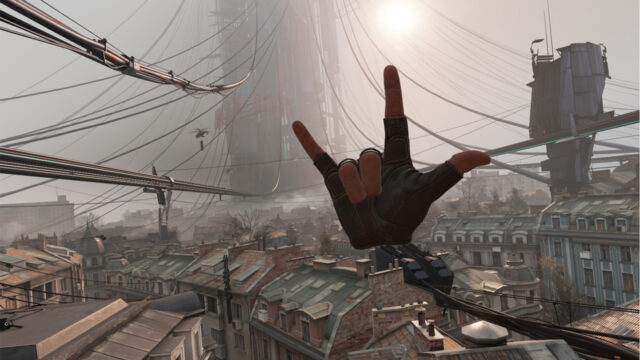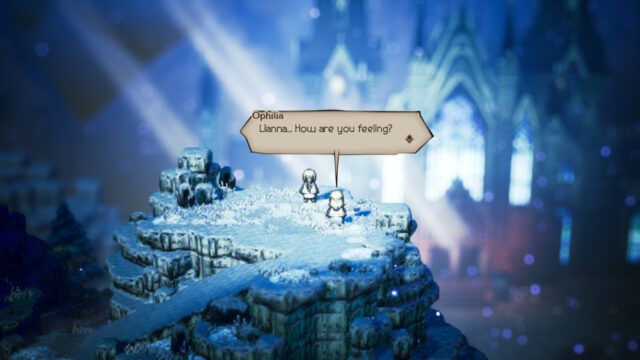Never Alone Review

It is as difficult to criticize Never Alone as it is to praise it. The authors made a big mistake in choosing the form of embodiment of their idea when they decided to show the world the everyday life and folklore of the northern peoples. If it were a short educational animated film, it would have been successful. If it were a web project with an embedded encyclopedia, no one would have said a bad word about it. But in our world, it is a weak platformer on a strong setting.
The story is entirely based on Eskimo beliefs and is presented as one of such legends. At its center is a little girl named Nuna, who leaves her native village to find the source of the blizzard tormenting her tribe. Soon, a funny fox joins her journey, and together with him, the brave girl immerses herself in the enchanting world of the Arctic.
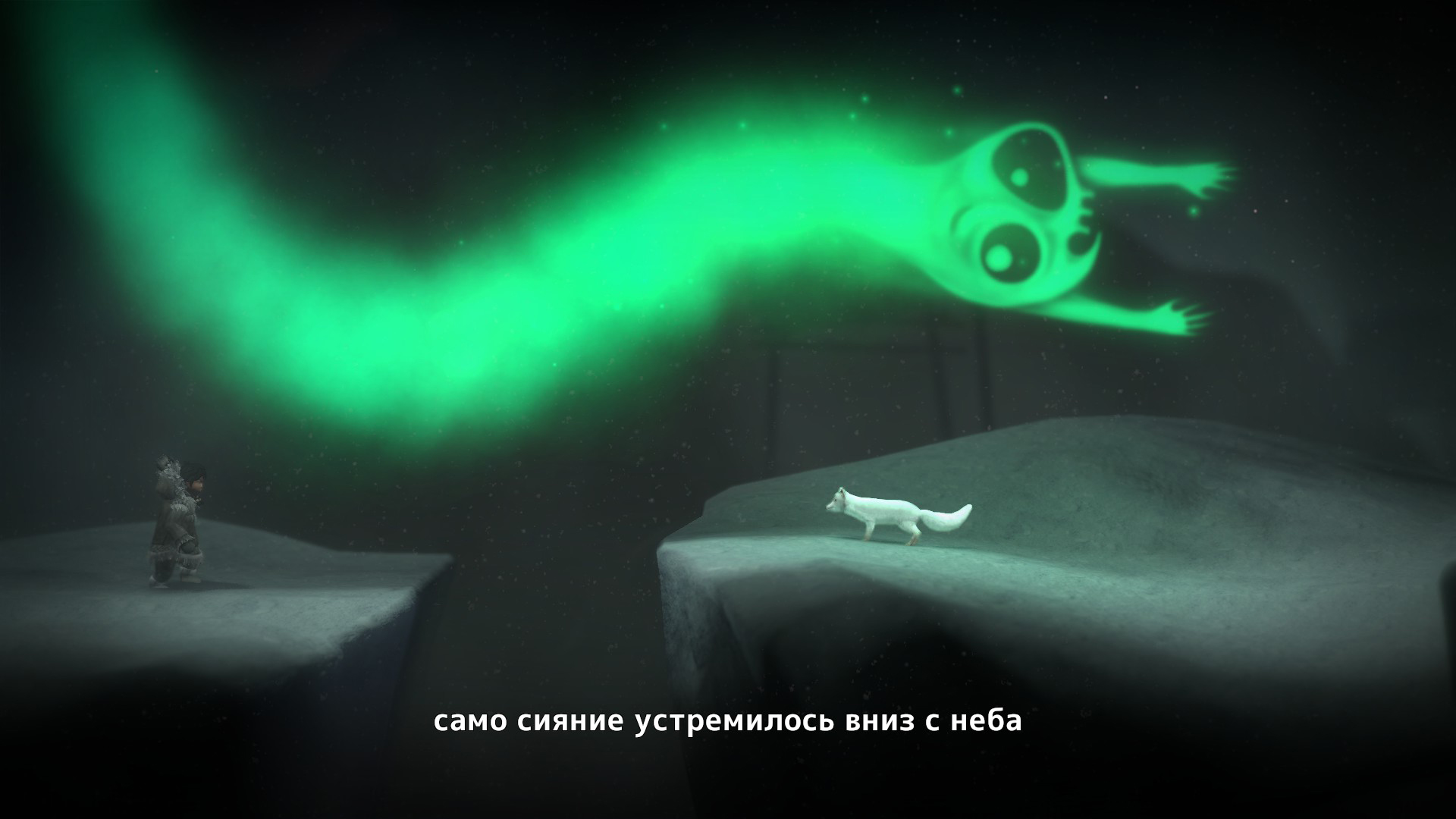
The work with the setting deserves special praise. While the heroes overcome the endless snow under the narrator’s voice, images from folk tales come to life and fantastic creatures flicker around. The atmosphere of cozy magic, mixed with the whistle of polar winds and adorned with a charming picture, seems to come out as a pleasant chill beyond the screen – and immediately makes you run for a warm blanket.
Just don’t bring tea with you, so as not to angrily splash it on the monitor after getting acquainted with the gameplay.
When the rules become a little more complicated than usual jumps, a terribly annoying fact is revealed – the mechanics are awful. The game endlessly presents monotonous puzzles with identical solutions. Here, Nuna has to throw a bola to break the ice barrier, and here you have to summon a spirit-platform for the creature and lift the heroine higher. From time to time, you have to play with the physics engine, sometimes – act quickly and accurately. That’s all the northern fun.
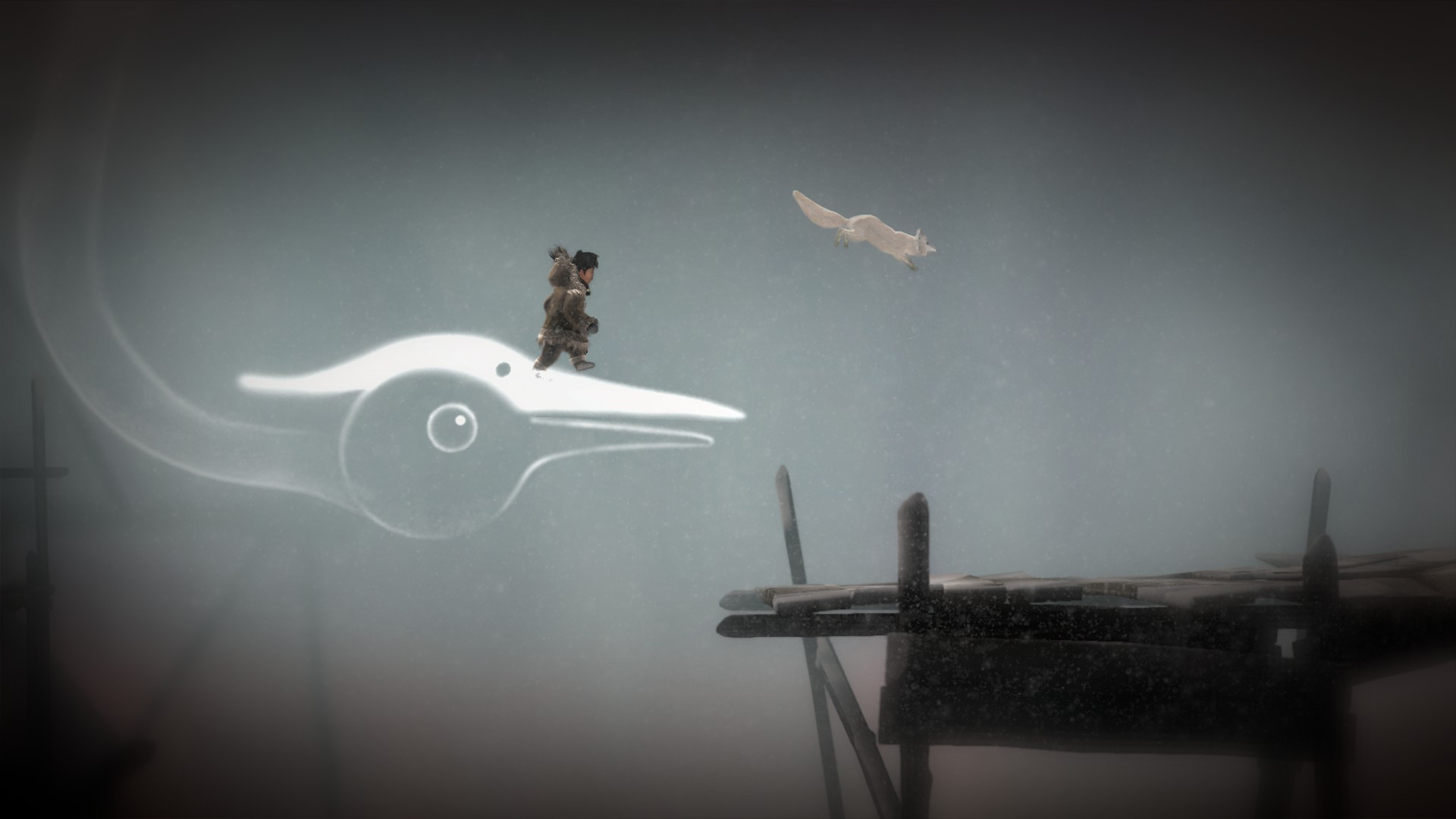
Although it is strange, the fact is that even the minimum set of tools used is not implemented properly. This primarily refers to management. An hour passes, a second, a third – and you will still randomly jump over gaps, trying to catch some pattern in the change of jumping distance, struggling to move the necessary box, and futilely throwing the ball at your own feet. The situation is slightly alleviated by the gamepad in your hands, but it is hardly a plus.
The situation is exacerbated by an unprecedented number of bugs. It would seem that in such a small game there would be no room for software defects, but that is not the case. Everything fails: characters storm walls and get stuck in them, their bodies stupidly stretch across half the screen in case of death, and ghostly silhouettes disappear for no reason along with some of the graphical filters. Well, at least not all at once, and for that, thank you.

Artificial intelligence does not help to cope with tasks. If you have no one to play the game with in local co-op, the computer takes control of one of the heroes – and it seems to intentionally interfere with living. The companion constantly rushes forward for no reason, but usually just loses memory somewhere at the far end of the level, which requires switching back and forth much more often than intended.
All of this not only hinders smooth gameplay, but also immersion. In the later stages of the game, when any mistake is fatal, all the aforementioned flaws come to the surface and hurt so much that the process becomes downright annoying. At that point, there is no time for the story.
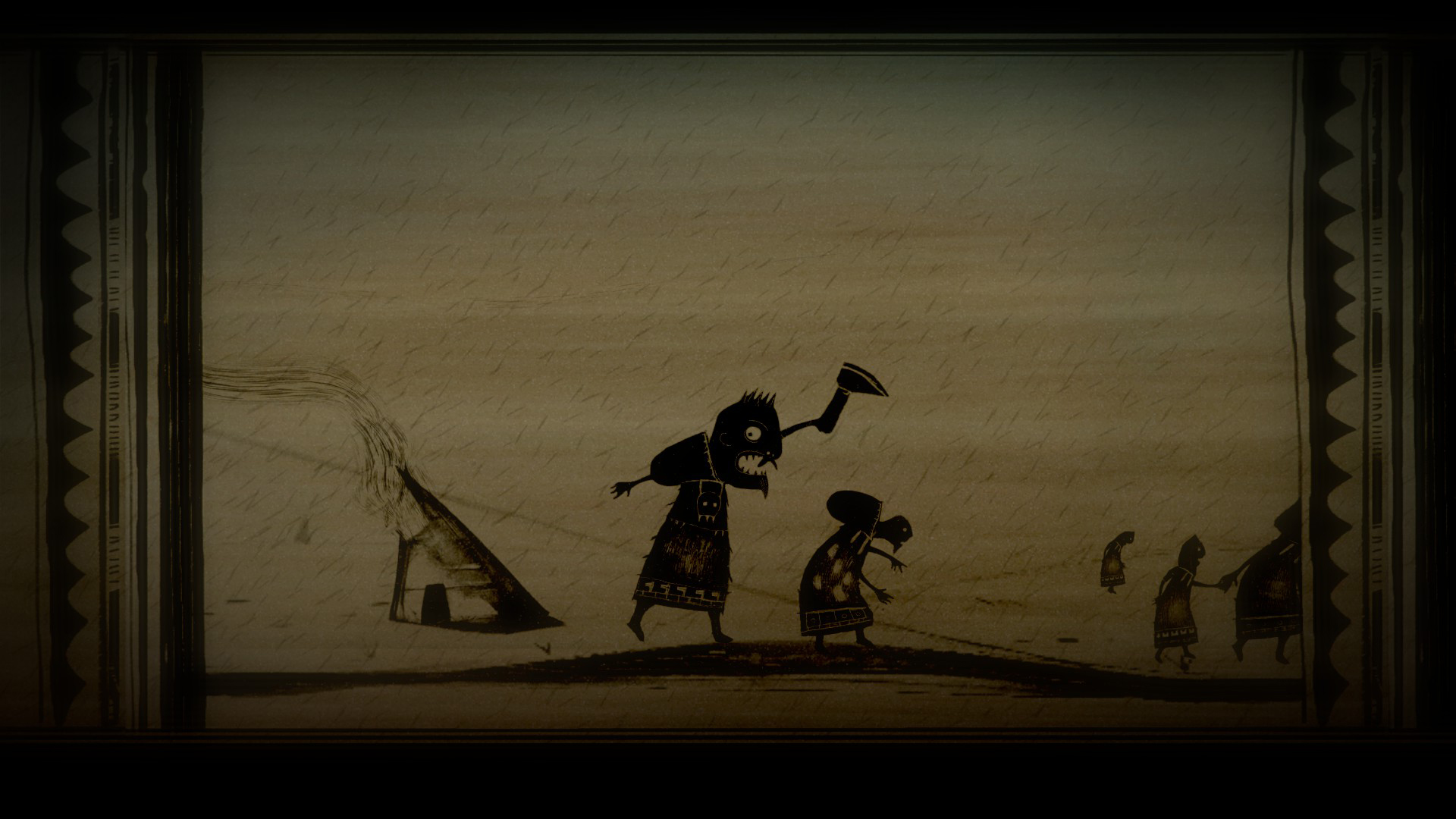
It is especially offensive for the educational basis of the game, which the developers apparently relied on the most. “We are not a museum exhibit. We are a living people with a living culture,” these are the words that greet us in the first video about the Inuit, the indigenous population of Alaska, and Never Alone does everything to convince us of this. Each episode, each little legend touched upon in the game, is dedicated to a separate video fragment with comments from real Eskimos. It is presented in a very concise and accessible way, so you get real pleasure from watching it. And soon you find yourself thinking that the additional materials are the only incentive to play.
By the way, the game originally supports the Russian language. There is no voice acting for understandable reasons (the narrator’s speech is exclusively in Inuit dialect), but the subtitles are translated quite well, without obvious mistakes. Fortunately, this also applies to the documentary part of the content.

The final credits of Never Alone are accompanied by extremely mixed feelings. The four-hour adventure from Upper One Games will surely be remembered not only for its beautiful exploration of culture, but also for its sloppy game design, which causes a significant portion of pleasant impressions to disappear with a sad whistle.
Share
Discuss
More Reviews
